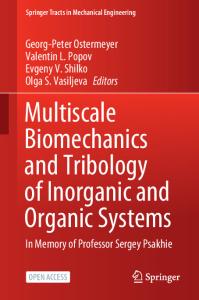Microstructure and Wear Properties of Surface Composite Layer Produced by Friction Stir Processing (FSP) in AA2024-T351
- PDF / 8,992,007 Bytes
- 15 Pages / 593.972 x 792 pts Page_size
- 64 Downloads / 283 Views
ONE of the present challenges in material engineering is the development of materials for sustainable transport. Recent years have seen investment directed at research into producing structural components of aluminum metal–matrix composites (MMCs) that combine low matrix weight with the high strength provided by ceramic particles.[1] Further, certain studies have sought to replace aluminum molds for the injection of polymers with these MMCs to lengthen useful life.[2] There are drawbacks to these materials, such as low toughness and complex fabrication requirements. In response, a new idea has been gaining recognition over the last decade. For applications where the strength of the alloy matrix is sufficient, and where toughness is required, it could be more practical to embed particles in the surface of the fabricated component at a later stage, and only in those areas that are subject to wear, abrasion, and surface fatigue. Pursuing this idea, several processing techniques have been the subject of research[3–6]; one of them is
R. ACUN˜A, M.J. CRISTO´BAL, C.M. ABREU, and M. CABEZA are with the ENCOMAT Group, University of Vigo, 36310 Vigo, Spain. Contact e-mail: [email protected] Manuscript submitted June 25, 2018.
METALLURGICAL AND MATERIALS TRANSACTIONS A
Friction Stir Processing (FSP).[7] Both micro- and/or nano-particles can be embedded in the surface of a metal matrix using FSP to produce what are known as Surface MMCs (SMMCs). This method produces a component made with wrought aluminum alloy after hardening through heat treatment, with a surface composite layer of a few millimeters in those areas that are more susceptible to degradation. The process involves machining a groove in the area that requires reinforcement on the metallic alloy piece; the particles to be embedded are inserted into the groove and the FSP tool acts on the area by stirring through the metal and distributing the particles within it. SMMCs have been produced using the FSP technique on aluminum substrates by several research groups. To date, the majority of the studies have improved the mechanical properties, hardness, wear resistance, and fatigue strength compared to the untreated alloys by adding micro- or nano-particles. The typical substrate has been wrought aluminum non-heat treatable alloys 1xxx[8–10] and 5xxx[11–22] series, and heat treatable 6xxx[23–27] series, however in an annealing condition. There has been no fabrication using FSP of this reinforced surface composite on aluminum alloy in a hardened condition. The thermal cycle during the stir process causes a coarsening and dissolution of the strengthening precipitates on the aluminum alloy matrix.[7] The challenge is to compensate for this effect with the reinforced particles. Rana et al.[28] produced
Al7075-T651/B4C surface composite using the FSP process with an increase of 70 pct in the hardness compared to substrate aluminum alloy in an annealing condition (75–80 HV) without a hardening treatment (T651-175HV). Devayaru et al.[29] successfully incorporated a mixture of mic
Data Loading...











